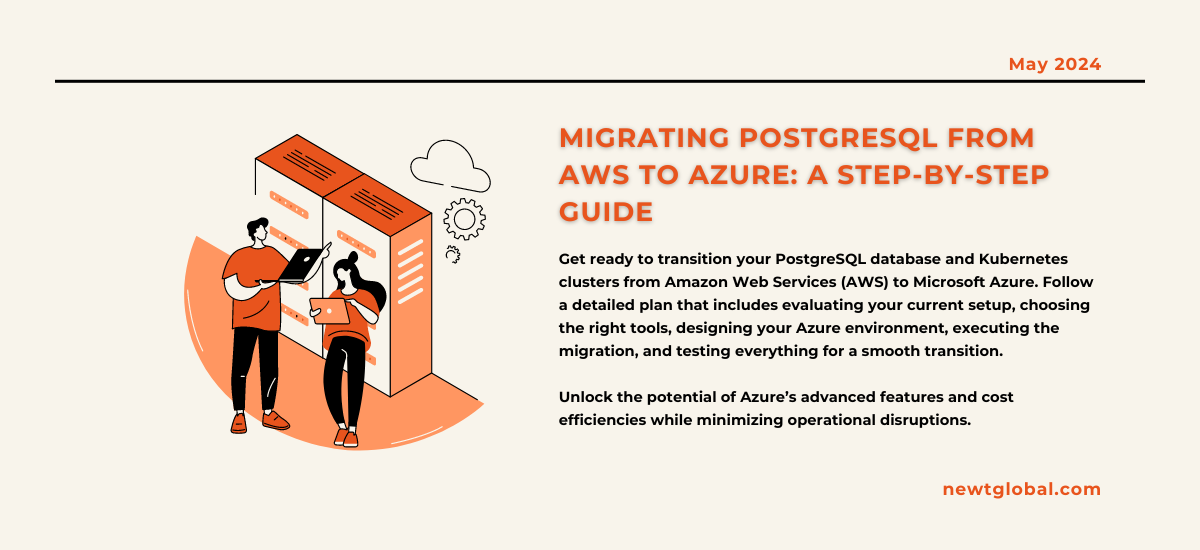
Thinking about moving your PostgreSQL database from Amazon Web Services (AWS) to Microsoft Azure? This is a big step that needs careful planning and action to make sure everything goes smoothly without causing too much trouble for your work. Here’s a simple guide on how to do this move, especially for those who use Oracle, Postgres, or are just interested in moving to the cloud.
Why Move?
People decide to move their databases from AWS to Azure for many reasons. Some of these reasons include saving money because Azure might offer better deals, discounts, or packages that fit better with how the organization uses cloud services. Azure also has some cool features like artificial intelligence, machine learning, and better security services, which are attractive to companies wanting to use the latest technology. Plus, Azure might be better at helping you follow specific rules or regulations that apply to your industry or location.
Prerequisites
Before you start moving things around, you need to:
-
- Know all about your PostgreSQL databases – like what version they are, how big they are, and any special settings they have.
- Understand your Kubernetes setup on AWS, including the details of your nodes, pods, and services.
- List all the apps and services that use the PostgreSQL database.
Planning Your Move
-
- Evaluation and Recording
First, take a close look at everything you have set up right now and write it all down. This step helps you spot any problems you might face and plan how to keep your services running smoothly during the move. You’ll also figure out how to test everything to make sure it works in the new setup.
-
- Choosing the Right Tools
There are tools out there to help you move your database, like the AWS Database Migration Service (DMS) for the first big move and the Azure Database Migration Service for keeping things in sync afterwards. For moving Kubernetes, Azure Migrate can make it easier to move your containerized apps.
-
- Designing Your Azure Setup
Plan carefully how you’ll set everything up in Azure. This includes:
-
-
- Decide which Azure services to use for hosting the PostgreSQL database, like Azure Database for PostgreSQL.
- Plan the Kubernetes cluster in Azure, thinking about using Azure Kubernetes Service (AKS) for easier management and scaling.
- Create network setups to make sure all services can connect securely and work well together.
-
Execution Phase
-
- Data Migration
- Moving Data for the First Time: We use AWS DMS to safely and quickly move the PostgreSQL database to Azure.
- Keeping Data Updated: We make sure the AWS and Azure databases stay in sync until the move to Azure is done, so there’s less downtime.
- Kubernetes Migration
- AKS Cluster Preparation: Establish the AKS cluster, mirroring the AWS environment’s nodes, pods, and services.
- Service Migration: Transition services, including those utilizing the PostgreSQL database, to AKS. Utilize tools such as Helm charts to automate application deployment to AKS.
- Testing
- Functional Testing: Make sure the apps and services work right in the new setup.
- Performance Testing: Check if the moved database and apps perform as well as or better than the goals set on AWS.
- Data Migration
Cutover and Post-Migration
-
- Cutover Implementation: After successful testing, make the switch to Azure by updating DNS records or application settings to use Azure services.
- Monitoring and Optimization: After moving, keep an eye on the new setup to make sure it runs well, doesn’t cost too much, and stays secure. Make changes if needed to keep everything working great.
Conclusion
Moving your PostgreSQL database and Kubernetes setup from AWS to Azure is a big task that needs lots of planning and careful work. But by following these steps, you can make the move smoothly, improving how things work while keeping interruptions to a minimum. The key is to prepare well, choose the right tools, and pay attention to detail through the whole process.
Ready to embark on your journey of migrating PostgreSQL databases and Kubernetes clusters from AWS to Azure? Let Newt Global be your guide to a seamless transition. With our expertise in cloud migration and optimization, we ensure a smooth migration process while minimizing operational disruptions.
Contact us at marketing@newtglobalcorp.com or visit newtglobal.com to explore how our solutions can accelerate your migration strategy. Don’t miss out on the opportunity to leverage Azure’s advanced features and cost efficiencies.
Newt Global DMAP is a world-class product enabling mass migration of Oracle Db to cloud-native PostgreSQL faster, better, and cheaper.
